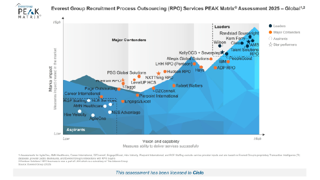When an employee resigns, estimates show that it costs a company about one-third of that worker’s annual earnings in replacement fees and lost productivity. Retaining top talent is cost-effective and critical to business success, especially in today’s challenging employment market.
It can be jarring when a high-performing employee says they're considering an opportunity elsewhere. Even more so when a manager learns the worker was ready to advance in their career but didn't know there was a professional development plan and promotion in the works. The answer a talent mobility program.
What is talent mobility?
Talent mobility (also called internal mobility) is when employees strategically move to new roles, departments, or locations within an organization. A talent mobility program is the initiative that supports this intentional movement.
A formal talent mobility program is not only key to retention and growth, but it's also a fantastic recruitment tool. People want to work for a company that allows them to learn, develop and realize their full potential.
Companies that lead on talent mobility see a 53% increase in employee tenure. To help retain employees looking for professional advancement, here are six steps to creating a strong talent mobility program that encourages career growth, engagement, and high performance:
1. Appoint a talent mobility leader
Promoting high performers through a talent mobility program is a great idea but not always successfully implemented. To provide a point person who can drive the process, appoint a dedicated internal mobility leader within the talent acquisition team.
The right leader will have:
- Oversight to an internal versus external candidate attraction process
- Visibility to identify any available and ready internal talent
- Expertise to navigate the conversations with hiring managers on why an internal candidate may be more ideal than an external candidate
2. Offer strategic development and stretch assignments
As a part of your talent mobility program, a formal development plan – reinforced by ongoing conversations with management – is necessary to improve retention and grow top talent. Train people leaders on how to construct a good development agenda and have constructive conversations around career development.
A useful development plan should include:
- Feedback on performance
- Examples of how to advance to the next career step
- What future roles may look like
- Recommendations for training or shadow opportunities
- Mentor option with someone who has been promoted internally
- Regularly scheduled meetings to review progress and discuss next steps
It can also involve offering stretch assignments – a project or task that is currently outside of an employee’s skill set. Whatever the growth road map entails, ensure employees and their managers align on goals, timelines, and next steps.
3. Be transparent and reliable
Employees can quickly lose engagement if the talent mobility program continually changes, damaging the employer’s reputation. Create a strategic outline of what a career looks like at the company and then follow it closely.
For example, during recruitment and onboarding, explain what a new employee can expect in their first few years of employment. Share a typical career ladder with employees that includes recent company data on average promotion timelines. Be open about check-ins, performance reviews, and how people can advance within the company.
4. Provide cross-training opportunities
Growth is not always a title change. Individuals can grow and develop while staying in the same title or role by taking on a larger scope of responsibility, leading more complex teams, or moving into another department.
Be clear about the opportunities and intentions. A promotion within an existing role should have a corresponding adjustment in salary commensurate with the responsibilities. Consider making company-wide announcements of advancements similar to new positions. Public recognition goes a long way to promoting a robust culture full of development opportunities, internal mobility, and long-term employment potential.
5. Take advantage of slow periods
Offering cross-training opportunities and stretch assignments are great, but some employees may not want to take on additional responsibilities. So, it is key to identify when a worker can dedicate time to projects outside of their current job scope to avoid feeling overwhelmed.
Managers should review the employee’s current workload and support delegating or handing off projects to free up some time. Additionally, some companies may have slow periods throughout the year due to decreased demand, reduced inventory levels, plant shut-downs, or maintenance work. To distinguish when these gaps arise, activity tracking, workforce planning, or production planning tools can be useful.
6. Create different value propositions
There is no one-size-fits-all talent mobility program. All levels of talent – from early career to C-Suite – are important to business goals, so offer growth opportunities that appeal to employees in different professional stages. Whether offering training internally or through a third-party vendor, provide a variety of class topics and formats that will appeal to a workforce’s diverse learning preferences and goals.
Individuals have different learning styles and speeds. Some people may prefer online, self-paced training while others thrive in instructor-led classes. When creating personalized development plans, ask employees about how they learn best. Personalizing plans based on their interests, experience, education and goals will ultimately deliver more impactful experiences.
Final thoughts
Every employee wants to be successful and see a future at a company. Having a defined talent mobility program with a realistic roadmap of expectations, combined with specific objectives, ongoing dialogue, and practical timelines to achieve their next opportunity will help build a bench of high performers ready for their next great role.
About the expert

Senior Vice President – Project Management Office, Cielo
LinkedIn connect





